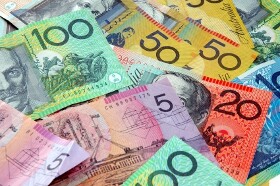The Australian dollar was rising in the first half of the week, reversed its decline in the second half, but wasn’t able to completely erase its losses and ended the week with closing price below the opening level.
The beginning of this week was bad for the Australian currency (often nicknamed Aussie). Concerns about the Greek bond swap were erasing demand for riskier assets. The decline of the eurozone economy and China’s downwardly revised growth target reinforced investors’ unwillingness to risk. Later market sentiment improved on positive fundamental data from the United States, particularly growing nonfarm payrolls.
Fundamentals in Australia itself were even worse. The Reserve Bank of Australia hinted that an interest rate cut is not out of question. Reports that followed made it clear that more stimulating policy is indeed warranted. The economic growth was slower than expected, while employment unexpectedly fell and trade balance surprised economists unpleasantly, posting a deficit instead of an expected surplus. All in all, everything indicates that the Aussie faced downside risks and may have a hard time in the near future.
AUD/USD dropped to the weekly low of 1.0509 (the lowest since January 25) from the opening rate of 1.07374 before closing at 1.0575 this week. AUD/JPY opened at 87.78, fell as low as 84.79 (the lowest level since February 22) and closed at 87.21. EUR/AUD was up from 1.2282 to 1.2404 this week, while the weekly high was 1.2517.
If you have any questions, comments or opinions regarding the Australian Dollar,
feel free to post them using the commentary form below.
